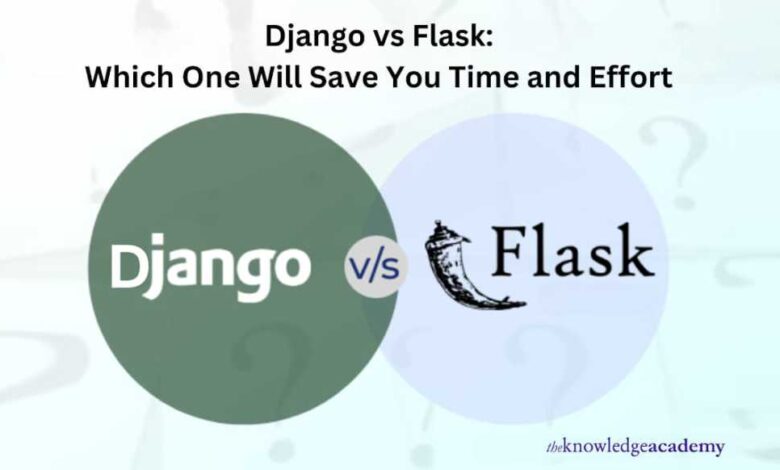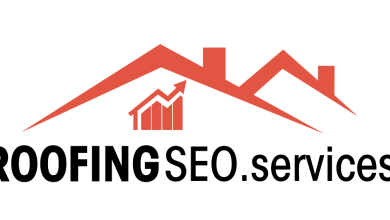
A wide range of tools, frameworks, and technologies are available in web development to speed up and improve the efficiency of the process. Two names frequently come up when discussing web frameworks based on Python, Django and Flask. Even if both are commonly used and have various advantages, the amount of time and work you spend on your job will depend much on which one you select. Understanding the differences between Django and Flask with Programming Training can significantly impact how efficiently you manage your development tasks.
The question that emerges is which will save you more time and effort. In this blog, we will do a Django vs Flask comparison so you can make an informed decision while choosing the best tool to save time and effort.
Table of Contents
- Understanding Django
- Time-Saving Aspects of Django
- Understanding Flask
- Time-Saving Aspects of Flask
- Django vs Flask: A Comparative Look
- Which One Will Save Your Time and Effort?
- Conclusion
Understanding Django
Python’s high-level web framework, Django, promotes quick development and simple, straightforward design. Released in 2005, Django is renowned for being “batteries-included,” meaning it includes many functionalities right out of the box. This is why developers who want to launch their apps quickly without spending time configuring several tools and settings will find Django particularly tempting.
Below are the key features of Django:
- Admin Panel: Django integrated admin interface is one of its most notable features. It provides developers with an already-made dashboard to manage users, posts, and other data without writing additional code, saving them time.
- ORM (Object-Relational Mapping): The Django feature lets you work with databases without explicitly writing Structured Query Language or SQL queries. This dramatically reduces work when managing intricate database interactions and migrations.
- Security: Django has many built-in security capabilities, such as SQL injection prevention, XSS protection, and CSRF protection, which save you time by removing the need to deal with these manually.
- Routing and Templating: Django URL routing and templating capabilities allow you to produce Hypertext Markup Language or HTML and establish strong, user-friendly URLs.
Time-Saving Aspects of Django
Django architecture is geared toward accelerating project launch times. You don’t need to search for extra libraries for fundamental functions like form processing, user authentication, and session management because they are already included in the system. The amount of time spent generating management dashboards from scratch is further decreased by its extensive admin panel. Furthermore, the Django methodology’s “convention over configuration” facilitates a more efficient development process by preventing you from wasting time setting up your project’s settings.
Understanding Flask
In contrast, Flask is a micro-framework that was made available in 2010. It gives you the bare minimum of what you need to create a web application, leaving the developer to do most of the work deciding which libraries and components to utilise. Developers can select the tools they want to use with Flask, which is more versatile than Django. Depending on the project, this might be an advantage or a problem.
Below are the key features of Flask:
- Minimalist Design: Flask is a lightweight framework that lets programmers add the required libraries and parts. This flexibility can be helpful for smaller projects if you don’t need all the other capabilities.
- Jinja2 Templating Engine: Flask uses the robust and user-friendly Jinja2 templating engine, enabling developers to quickly produce dynamic HTML.
- Blueprints: The Flask blueprint feature helps you easily organise and manage your application by dividing larger projects into smaller, reusable modules.
- Middleware and Extensions: Several third-party Flask extensions can handle user authentication, form validation, and database integration tasks.
Time-Saving Aspects of Flask
Small applications can benefit from the simplicity of Flask since it eliminates the need to deal with unnecessary functionality. Without worrying about the high learning curve of Django, you can rapidly create a basic web application. If certain components are needed for your project, you can add them as required and are not restricted to the more structured Django method. Because of its flexibility, Flask is a fantastic option for developers who wish to cut down on time-consuming functionality.
Django vs Flask: A Comparative Look
Below are the key differences that will help you decide which framework best suits your project needs.
Project Size: Django is usually better when working on a large-scale project with complicated features. Because of its batteries-included concept, it offers many built-in tools and saves you time compared to setting up other libraries.
When working on smaller projects or needing only a few essential capabilities, Flask can be a more suitable option. It will be easy to keep focused because you will just include the necessary components and won’t be burdened by extraneous tools.
Ease of Use: Convention over the configuration of Django philosophy has advantages and disadvantages. Setting defaults for many of your project’s components can save time, but it can also reduce flexibility.
In comparison, Flask is more interactive and necessitates configuring numerous components. Flask may save you work if you’re experienced and would rather have more control by letting you implement only what’s required.
Learning Curve: The learning curve is steeper because Django has many built-in capabilities. Although this may initially slow development, if you become comfortable with the framework, you will save a lot of time in the long run. Although the simplicity of Flask makes it easier to get started, you could discover that handling more libraries and extensions takes more work as your project expands.
Scalability: Although Flask and Django may be used to create scalable applications, the Django framework is better suited to managing more significant projects. In the long run, Django will probably save you time by offering ready-made tools for managing everything from security to user management—if scale is an issue. Even though Flask is scalable, handling larger apps involves extra setup, which could add time to your development process.
Community and Support: Compared to Flask, Django has a bigger and more established community, which means more pre-built components, plugins, and tutorials are available to save you time. Despite being smaller, the Flask community is very vibrant and offers a wealth of extensions to bridge the gaps created by its simple architecture.
You’re more likely to find answers to issues quickly because of the scale of the Django community, which might save you a tonne of work during development.
Which One Will Save Your Time and Effort?
The answer primarily depends on the specifications of your project. When creating a feature-rich, large-scale application, Django is the undisputed best choice for efficiency in terms of time and labour. Because of its structured approach and built-in tools, you won’t have to search for and set up extra libraries for common functionalities.
However, the lightweight architecture of Flask and its flexibility might save you more time during the early development phase if your project is more focused or smaller. Developers who appreciate simplicity and control will also find Flask a fantastic option.
Conclusion
Both frameworks have benefits; thus, choosing between Django and Flask is up to personal preference. With so many built-in capabilities, the comprehensive architecture of Django saves time and makes it perfect for complicated, large-scale projects. However, the Flask basic approach speeds development in smaller projects with negligible overhead. The framework that saves you the most time and effort will rely on your project’s complexity, scope, and personal development style, and free resources from The Knowledge Academy can help you deepen your understanding of these tools.



